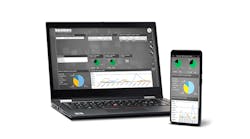“Sometimes just OK is not OK,” says the narrator of the cellular provider’s TV commercial. The scenes are humorous, as the befuddled customers are confronted by lackadaisical service providers, whether a surgeon, auto repairman or tattooist. In our discipline, we hope our service providers have higher aspirations for excellence. But for our ultimate end users and the enterprise—who rely on our discipline to provide interlocks that ensure the process is safely parked when limits are exceeded, a clear and unhindered view of complex processes to operators, and measurements with the consistency and repeatability to support long-term forecasts for productivity and reliability—are we exceeding “just OK?”
We read of and sometimes experience instances where “just OK” failed. This might mean the “squeaky wheel gets the grease” for a spell, but it rarely results in a reconnoitering of processes and priorities. As they read of calamities that befall their peers and competitors, corporate board members wooing investors want assurance that their cash-producing but complex and scary assets aren’t going to make any headlines. Despite this, adding positions like “instrument reliability specialist” may be a dream, and even if we’re authorized to create such positions, the competition for competent I&C talent is intense.
How does one ensure the integrity of the I&C system? Is there a preventive or proactive maintenance scheme to perform and document calibrations on a routine basis? Do you scramble during infrequent process outages to exercise instruments and interlocks, and document any faults that would not otherwise have been revealed? Are HAZOP revalidations and other process hazard analyses constantly identifying instances where measurements are part of a vital “layer of protection?” Run-to-failure may be “just OK” for fewer and fewer devices and systems.
If we're challenged to physically validate a measurement through calibration, i.e., applying a known, traceable standard to a device and verifying all indications agree within tolerances, perhaps we can employ other features or assumptions. For decades, designers of safety interlocks have favored analog transmitters in lieu of switches, i.e. low level in a knock-out drum. Many such measurements are now triplicated for fault tolerance as well as reliability—two out of three must vote to invoke an interlock or trip.
The old switch only needed to be accurate at one point—the trip setting. Its downfall was that any fault less self-revealing (such as, if the switch was stuck), you wouldn’t know if you didn’t test it. Now, when triplicated analog transmitters are employed, it might suffice to simply verify the trip point alone as opposed to doing a five-point calibration. How important is it to know a level or a pressure within the 1% tolerance you might enforce for custody transfer? If the trip point isn’t within a hair’s breadth of the safe operating limit (and why should it be), then that margin might better dictate severity and frequency for testing.
We have an array of flowmeters that defy validation without using an external meter-proving loop. One option might be to perform a validation based on other measurements. For a reboiler steam flow, an energy balance around the tower can validate it against other tower conditions, and adequately surmise whether a flowmeter is reading adequately. Simple relationships between valve percent-open and flow can identify candidates for further scrutiny—if a flow is substantially less at the same operating point as a month ago, the procedure can trigger an investigation or a more meticulous calibration.
If we must tackle this challenge—achieving a level of excellence that meets the expectations of our end users, without much infusion of resources—we can explore opportunities to exploit features of present-day systems and measurement devices. We can exceed “just OK” by creating some diagnostics to validate key measurements, and examine them routinely. If you document your routine, it may be enough to check the box for validating numerous measurements, without exhaustive and labor-intensive calibrations.




